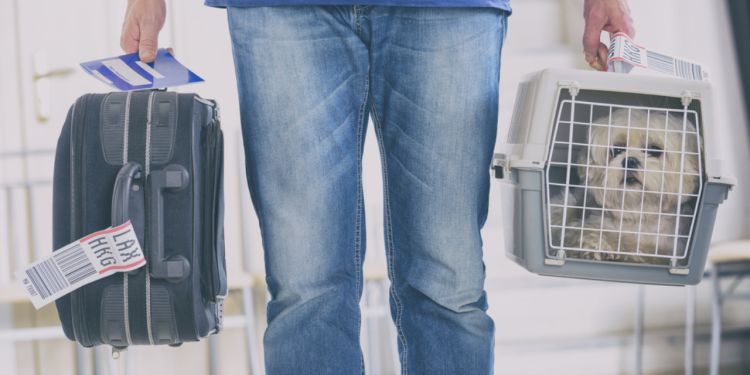How to relocate to the Philippines with your pet

Pets, particularly cats and dogs, are often considered as family members. So if you are moving to the Philippines, you will probably want your four-legged friend to accompany you. This should not be complicated as the Philippines is rather open towards pets. Dogs are everywhere in the Philippines, strays and pets. Most households have at least one dog (and sometimes lots more!)
Conditions to be met for bringing pets to the Philippines
Formalities are quite simple if you have all the relevant information. Feel free to contact the Philippine embassy or consulate in your home country before proceeding.
To bring your pet to the Philippines, you must secure an import permit. This permit will outline all the requirements for pet transport, including the necessary health certificates.
Prepare your pet for a long flight by introducing them to their travel kennel. Philippine Airlines does not permit pets to travel in the cabin with the exception of medically certified service dogs and emotional support dogs. Service dogs can fly on all routes. Emotional Support Animals/Dogs are not accepted onboard the cabin on all flights. Cebu Pacific does not permit any type of live animal to fly in the cabin of its aircraft unless on flights to and from the United States and your pet is a service or emotional support animal.
Procedures for moving to the Philippines with your pet
The first step is to register with the Philippine Bureau of Animal Industry (BAI).
Once you have registered with the BAI, a Sanitary and Phytosanitary Import Clearance (SPSIC) can be obtained from the BAI National Veterinary Quarantine Services Division (NVQSD) prior to importation. Do this by logging in on the BAI website using your registered email address and password to get to the 3-page SPS Clearance Application (import permit). Print this and present it at the Philippine quarantine station in the airport. Approval usually takes 1-2 days, while the validity of the SPS permit is two months. The total estimated fees/ cost to bring your pet to the Philippines is approx php50,000/USD 900.
Important:
One SPSIC is valid for a maximum of three heads per species of pet per importer. If you wish to import more pets, you will be required to declare a quarantine site prior to the approval of your SPSIC application.
Good to know:
Identification of a pet dog or cat with an ISO-compliant microchip / RFID (radio-frequency identification) is mandatory in order to register your animal with the BAI.
During the application, you must specify your pet's species and breed, type and description, as well as its scheduled arrival date in the Philippines. Moreover, the following documents have to be produced to the veterinary service on its arrival in the country:
-
a pet passport;
-
a valid health certificate issued by a licensed veterinarian in your home country, indicating that the animal was examined and has not suffered from any communicable diseases at least ten days before the scheduled date of travel;
-
a vaccination certificate stating that your pet has been vaccinated against rabies, distemper, infectious hepatitis, leptospirosis, canine parvovirus and feline typhus, etc.;
-
proof that the animal has been treated against internal and external parasites.
Important:
In case rabies is present in your home country, your pet will require a certificate certifying that no case of rabies has been detected within a radius of 20 km around the place where it has stayed during the last six months. It must also be vaccinated against rabies between 30 days and 12 months before the scheduled travel date. The rabies vaccination's effectiveness then has to be verified through a blood test by an accredited laboratory.
Bringing my pet from the US to the Philippines
As there is a large percentage of Americans relocating to the Philippines, it is useful to convey the specific requirements for US- Philippines pet travel and relocation. All health certificates for dogs and cats to the Philippines must be issued by a USDA accredited veterinarian, and then endorsed by USDA-APHIS prior to travel. A private USDA-accredited veterinarian will then issue the expat with an export health certificate in accordance with the criteria listed in the SPSIC. For more information, click here.
Bringing pets other than cats and dogs to the Philippines
Turtles, birds, such as parrots, and hamsters are also common expat pet favorites. If your addition to the family is a pet other than a cat or dog and you cannot live without your furry or not-so-furry friend in the Philippines, it is recommended that you contact a government official of the Philippines for more information and permission. While this is possible, yes, there can be more bureaucracy involved for pets which are not cats or dogs.
Is there a quarantine for my pet in the Philippines?
Your pet will not be quarantined on its arrival into the country. However, you are advised to comply with the above-mentioned conditions for a successful move to the Philippines with your pet.
Useful link:









